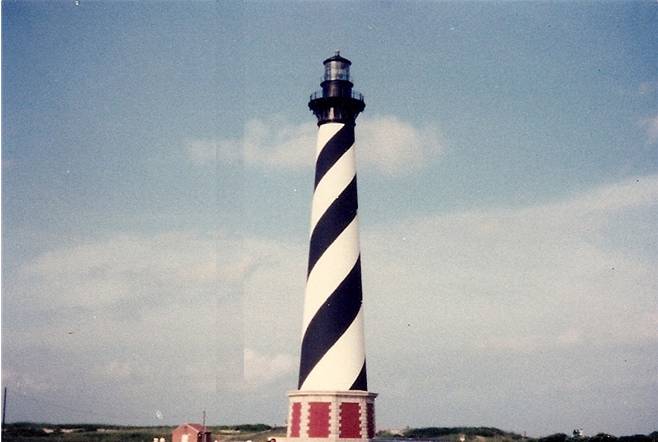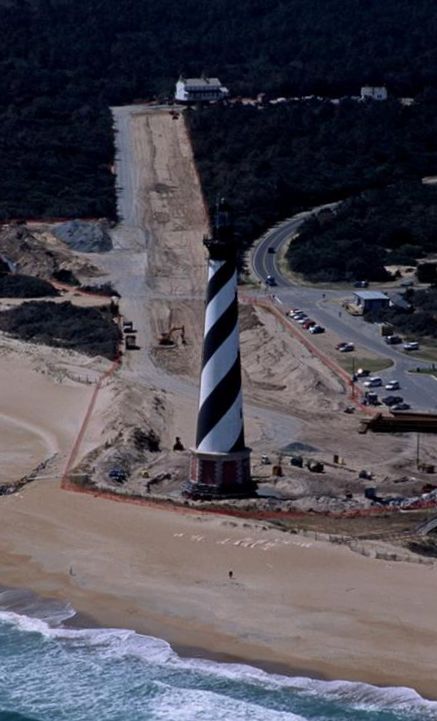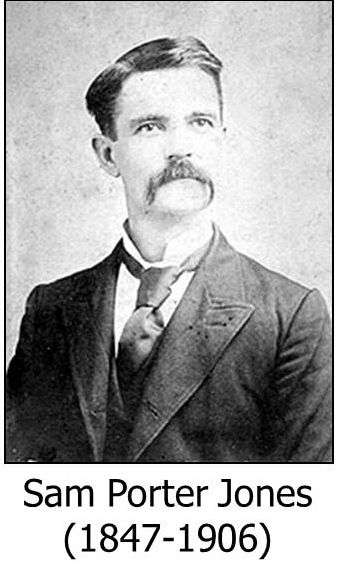Nothing is Impossible

The Cape Hatteras Lighthouse was built in 1870, and its warning light saved many a mariner at the site called the “Graveyard of the Atlantic.” Diamond Shoals, just off of North Carolina, is where the warm Gulf Stream collides with the colder Labrador Current. This makes for a dangerous mix of weather and shifting sandbars, claiming hundreds of ships and thousands of lives over recorded history.
Because of the great need, the 210 foot high Hatteras Lighthouse, the tallest in North America, was built on a remote island.

My mother, Jean Dennis Stanley, was born out on Cape Hatteras, and over a hundred years ago, my great-grandfather, Willie Tolson, was an assistant lighthouse keeper. As a boy, I enjoyed visiting the area and climbing the 257 steps to the top of the lighthouse (that will cost you $8 now).
Over the years, each hurricane would change the landscape, eroding the island. By the 1990’s, the lighthouse was in danger of being destroyed by the ocean. The beach had gotten to within 15 feet of the lighthouse. Various ideas to protect the lighthouse were suggested, and what seemed impossible, was decided upon: the Hatteras Lighthouse would be moved further inland.
Many said it couldn’t be done, and others filed lawsuits to stop the attempt, which they thought was doomed.
But twenty-five years ago, in the summer of 1999, the monumental task was begun. Using guiding sensors, and special jacks, the nearly 5 ton lighthouse was lifted 6 feet in the air. Put on a specially designed platform, the lighthouse was moved on a roadbed dolly only 5 feet at a time. It took about a month to move the massive structure (1.2 million bricks) the 2,900 feet to its final resting place. The lighthouse arrived on July 9, 1999.

When it was put back in place, the Hatteras Lighthouse began its mission of again sending forth the light.
I have since taken the family to see the Hatteras lighthouse, and introduce them to the the heritage of their forefathers who protected mariners in these dangerous waters.
And spiritually, the days we live in are filled with danger.
The morals of our country seem to erode away more every year.

Sins that would never be mentioned, are thrust into our presence, and pawned off as diversity.
It is not politics that will save this nation. It is a turning to God. What is needed in this country is an old time Revival - a change that seems almost impossible.
But remember what Jesus said in Mark 10, when asked about salvation – With men it is impossible, but not with God: for with God all things are possible. (v. 27)
Corn-stalk Revival

Evangelist Sam Jones was a fiery evangelist from northern Georgia. He saw Revival sweep across America, with thousands of souls saved and lives changed. One of those converted was Captain Tom Ryman, a steamboat owner in Nashville, Tennessee. He had gone to heckle at a Sam Jones meeting, and ended up getting saved. Ryman went on to build a huge auditorium to hold the crowds indoors when Sam Jones came to preach. The 2,000+ seat building became known as the Ryman Auditorium, and later the home of the Grand Old Opry.
Once, while Sam Jones was preaching in Cincinnati, Ohio, he made a point to tell the people that he desired real revival. He stated: We want the sort of revival that will make men do the clean thing. If we can have that sort of revival I want to see it – but not corn-stalk revivals. Do you know what a corn-stalk revival is? Well, if you were to pile up a lot of corn-stalks as high as this house, and burn them up, there wouldn’t be a hodful of ashes. We want a revival of righteousness; we want a revival of honesty; we want a revival of cleanness and purity, of debt-paying, of prayer-meetings, of family prayer, and of paying our brothers a little more salary. That’s the sort of revival we want. The Lord give us this sort! Jones, Sam Porter. Quit Your Meanness. Cranston & Stowe: Cincinnati 1886 p. 46.
One City - Two Prophecies

Robert Ingersoll, nicknamed the “The Great Agnostic”, became famous in America as a skillful orator. He was a lawyer, Civil War officer, and a politician, and he acquired much wealth through his speaking tours. Although the son of a preacher, Ingersoll would often ridicule the Bible and speak against its teachings.
One day Robert Ingersoll stood in the Opera House of Peoria, Illinois, where he lived, and made a prophecy concerning Christianity. He said that in twenty-five years there wouldn’t be a church in Peoria with enough life in it to decently support a minister. Ingersoll called attention to a humble Methodist minister who pastored a small wooden church on a side street, calling him a “half-starved preacher.” He compared his lucrative law practice and his elegant Cockle Mansion with the meager income and humble cottage of the obscure minister. Ingersoll’s goal was to show his audience - that it paid to be an infidel.
The next Sunday, this same Methodist preacher did a little prophesying of his own. The preacher boldly stated: “Twenty- five years from now the Methodist Church of Peoria will be on one of the finest corners with its imposing structure; and as for this vaunting Goliath, who dares defy the armies of the living God, he will be well-nigh forgotten.”
Robert Ingersoll met his appointment with death a few years later, while vacationing outside of New York City. His last words, before what was presumed a massive heart attack, were: “I do not want anybody to wait on me just yet.” (NY Times 7/22/1899).

And what about the prophecies?
Three decades later, the first Methodist Church of Peoria had over 1000 members and occupied one of the finest church buildings in the state. In contrast, Ingersoll’s law office was occupied by a majestic, Young Men’s Christian Association building, while Ingersoll’s lovely residence had given way to a large tobacco factory that was said to produce “the rottenest five cent cigars in the United States” (Biederwolf, W.E. The Wonderful Christ Wm. B. Eerdmans Publishing Co.: Philadelphia, PA 1937, p. 96).






